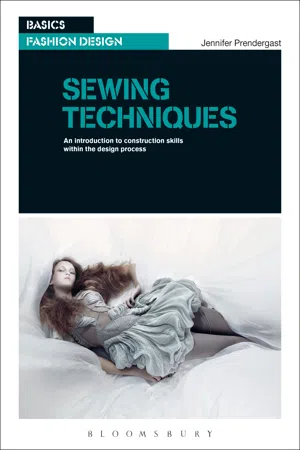
Sewing Techniques
An Introduction to Construction Skills Within the Design Process
Jennifer Prendergast
- 184 páginas
- English
- ePUB (apto para móviles)
- Disponible en iOS y Android
Sewing Techniques
An Introduction to Construction Skills Within the Design Process
Jennifer Prendergast
Información del libro
Sewing techniques are sometimes overlooked in the design process but acquiring these skills can be transformational. The ability to turn a two-dimensional design into its three-dimensional realization comes from having mastered basic sewing techniques. Sewing Techniques simplifies the often complex techniques that lie behind this process by arming designers with the precise information and skills needed to undertake each task. Designers who develop a basic understanding of the processes involved in sample and garment construction often produce successful outcomes based on a more experimental and creative approach applied during the product development process. Developing a sample folio and being able to refer to samples and develop them according to each individual design project is a process that requires experimentation and creative thought underpinned by a basic understanding of sewing techniques. This book explores the essential equipment needed - from fabric types to diagrams identifying component parts of a sewing machine, to machine operation. Throughout each process, clear diagrams accompanied by explanatory description panels allow readers to achieve the best possible results, including how to troubleshoot problems that may be encountered before and during sewing. Each section concludes with a project, progressing from easy to challenging. Fabrics for each project give designers the opportunity to handle different fabric types and understand the complexities of sourcing and selecting. Mastering the basic principles covered in Sewing Techniques will enable both fashion students and the contemporary craftworker to develop their techniques with a view to becoming creative practice-based professionals.
Preguntas frecuentes
Información




